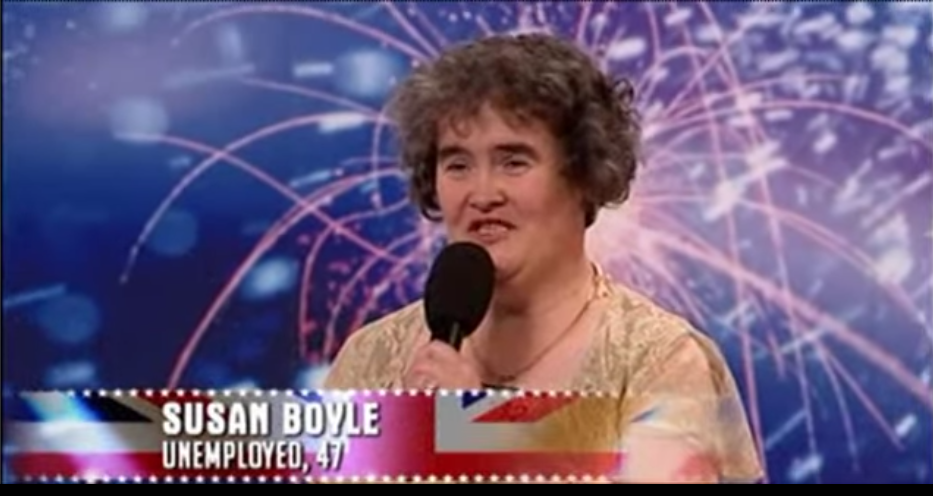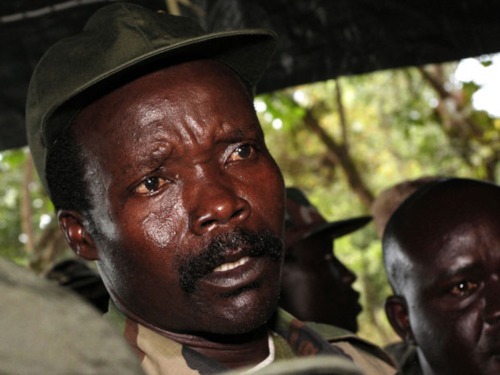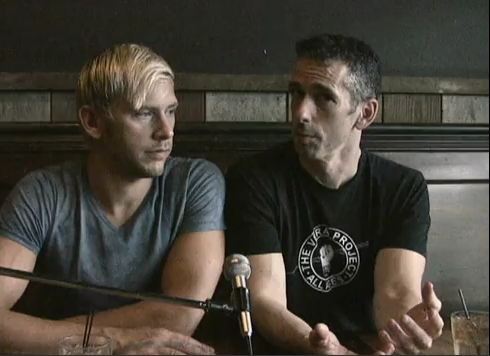Andrea Swift is the department chair of Documentary Filmmaking at the New York Film Academy’s New York City campus. She has written, directed, and produced many projects, having been awarded the Scriptapalooza TV Award, Silver at the Chicago International Film Festival, a DGA award, and many others. Her PBS Documentary “In the Life” was nominated for an Emmy three times.
Has a viral video ever really changed the world? Even a little bit? How?
As the latest crew of NYFA Docsters begin their first cyber film, I am once again updating my list of must-see viral videos for them to consider. It’s always a tricky list to compile, and even trickier to narrow down. YouTube’s greatest hits make a good starting point. In at least one key respect, they clearly “worked.” Hundreds of millions of people have watched and shared Charlie Bit My Finger and The Evolution of Dance. There’s something to learn there, and something to learn from Waka, Waka (This Time for Africa) and other uber viral music videos.
Perhaps virally successful corporate advertisements have even more to teach. Somehow the makers of The Force, for example, got well over 50 million of us to willingly watch a Volkswagen commercial without the pay off of “real programming” around it. And then they got us to “share” it with to our friends. That’s an even higher bar to clear. Yet they did it.
However, the real Holy Grail for us social documentary types is the movie that changes the world – at least a little bit. Not an easy feat. If it was, everyone would do it. Still, I propose that there are several viral videos, mostly micro-docs that have managed to pull it off.

5.) Crush on Obama: This one’s been on the cultural radar for four years now. In their combined incarnations, Obama Girl videos have scored over 120 million views. And while it seems silly, many in the mainstream media have identified Crush on Obama as a key influencer in the 2008 elections, and beyond. Perhaps the greatest take-away for aspiring viral game-changers is its success as a “meme.”[1] In fact, in 2010 Newsweek named the video the #3 biggest meme of the decade.
Elaborating, The New York Times wrote, “That video probably had more to do with shaping Obama’s complicated public image — young and exciting but maybe a bit shallow — than any Internet appeal devised by the candidate’s own aides.”
I have to admit it’s especially warm in my mind because its director is upstairs teaching a Viral Video class for the Doc students right now. On the other hand, he’s there because it was already warm in my mind.
4.) Susan Boyle – Britain’s Got Talent: This micro-doc pulled from a television show, tells a great, authentic story that makes the cyber world laugh, cry and share again and again. For the viral doc-maker, I´d say the major take-away here is story. As the old adage goes, “a great story, well told” is pure gold in any medium. And a great, well-told, cyber-sized, underdog fable hits our biological “share” button like one of those little rubber reflex hammers.
Granted the first chapter of this particular viral video-making story is luck. Well-produced luck, I would argue, but still, luck. Even so, her performance would have been a tree that fell in the woods had the producers not met that lucky occurrence with the skill to recognize it, shoot the story beats as they happened, and then carefully recreate them so their audience could experience the moment as if we were in the room the moment it’s going down. Even with all that, however, it would have been a tree that only fell on British TV if someone hadn’t excised the exact arc of that perfect cyber-sized story, uploaded it and set it free to spread itself through our socially networked cyber psyche.
But what game did it change? It certainly didn’t help elect a president. Someone who’d been marginalized was laughed at and then became an international star. Her game certainly changed, but more to our point, the whole pop culture game changed with it – just a little bit. That story shamed us for the initial pejorative response we probably shared, at least a little. And it opened our hearts and minds to the possibility that a woman who is not young and not so physically attractive could still be worth listening to, could even have a place in the modern Pop Pantheon. It´s hard to measure the exact impact of that change, but by integrating Susan Boyle into our pop iconography, our collective-self image grew just a little more complex, and ever so slightly less scornful.

3.) Playing for change, “Stand by Me”: This little documentary is my all time favorite viral share. “But that’s a music video,” you say? It is. It’s also a micro documentary. I only argue this about the original Playing for Change video, Stand By Me. The others really are just music videos. Good music videos, but still, just music videos. “Stand by Me,” on the other hand, tells the story of the making of itself, and consequently the story of the project and its meaning. That’s what lifts it out of the realm of simple music videos and into the arena of viral micro-documentary.
More importantly for this list, I argue that in rhythmic, gentle ways that are difficult to quantify, that musical documentary changes the world by changing us. It tells a story that moves us – both emotionally and physically – which helps it work its simple meme deeper and deeper into our consciousness: all our divergent, wonderful cultures can play together and when they do, our global jam session can become transcendent. We aren’t “others.” We make magnificent music together.
And being a story with a great beat, and a meme we can sing along with, Stand by Me can reinforce that change, and inspire its propagation, over and over again.

2.) KONY 2012: Scoring over 100 million views in less than a month and spawning spin-offs and backlash videos which have generated almost as many views themselves, it is easily the viral video story of the year. Like Zietgeist before it, KONY 2012 demonstrates the incredible power of the web to spread ideas and create movements, along with its absolute lack of controls for testing a video’s validity or veracity before allowing its entry into this burgeoning engine of our collective consciousness. On the other hand, it also demonstrates the new, highly democratic forum that, if stimulated, creates a remarkable after-the-fact control for both the validity and veracity of the memes we launch into cyber space.
That video’s career also demonstrates the power of simplicity in this realm, as well as our potentially ruthless response to being initially taken by a video what we then start to feel is a gross oversimplification, propaganda or self-promotion. Personally, I found the later pre-arrest video of Jason Russell almost as heartbreaking the original video. Yet I have to confess to feeling a teeny, tiny wave of schadenfreude as well. But why?
There was an almost classical Greek symmetry to this flash tragedy playing out before our cyber eyes. Here a well-meaning hero sets out to save the world. But his hubris taints his self-told tale with just enough reckless oversimplification and self-aggrandizement that its instant mega-success breeds a near immediate aftershock of denunciation. And the laceration of that backlash wounds him so intensely that it sends our hero out onto the street, naked and beating the ground, seemingly driven mad by the extremity of his near simultaneous fame and mass rejection.
It’s a cautionary tale for would be viral world-savers. However, read carefully, the story of the KONY 2012 video, can also light the way for making cyber media that matters. I rate it an unparalleled success, though perhaps not in the exact form its maker intended. April 20th will not find me graffiti-ing in favor of increased military support for a regime that now kills people for being gay; nor wheat-pasting in support of American military adventurism in Africa.
But it did get us talking about KONY and the Jacobs of the world. It did get young America interested in the mass kidnapping, rape and forced soldiering of children in central Africa. It did create an atmosphere that led the ratings-driven American media to devote the kind of airtime to the human toll of central African turmoil that it usually reserves for freeze-frames of Lindsey Lohan’s underwear, or purported lack thereof.
So regardless of how many people hit the streets on April 20th, it’s already changed the world – a little bit. It could arguably have changed it more and more lastingly, and caused significantly less pain to its maker, if he had been a little more careful with his facts and little less certain that he knows best for Africa. But the equivalent of one in three Americans listened to Russell’s idea for a full 30 minutes, shared it, and spent an hour or two considering it, arguing about it, telling other people. And as a culture, we decided, at least, that what happens to children in Uganda, matters to us.

1.) It Gets Better: You may remember that in 2010, American news reported four gay teen suicides in rapid succession. Each boy had clearly acted in response to relentless bullying. Trying to form a response, the nation could only seem to mutter inchoate disapproval.
Meanwhile two men, Dan and Terry, decided that they had to reach out the hundreds (maybe thousands) of other teens who were experiencing similar fates. The men sat on their couch, in front of their home video camera, making a low quality, YouTube message-in-a-bottle for those kids. In it, they just shared the stories of their own terrible, humiliating experiences being bullied as teenagers, and about the thriving lives they have built since. With their stories, they offered the simple hope that “it gets better.”
Well, the rest is history, that video tore around the internet spawning countless replications and morphing from a simple, unassuming offer of hope into a national rallying cry for reform. Hollywood, the Secretary of State, even the President stood up to be counted in their own, It Gets Better videos. And reform we did. State after state and school district after school district has changed its laws and policies. Anti-gay bullying is no longer simply swept under the rug of the collective cultural consciousness, with a “kids will be kids” wave of the hand. Like any other form of violence, it is now a crime.
This one changed the world, in obvious ways – both political and cultural.
And the big take away? For me, there are a few. One is that the law of unintended consequences is turbo-charged in cyber space. Set an idea free in the wilds of that vast neural network and there’s no telling what it will do. But the nature of your initial offering is crucial. It may replicate and morph and go places you never could have guessed but all of that will be defined by the essential nature of your meme. In this case, the voice of that selfless, authentic, first person “true” story carried throughout the entire movement it spawned and moved people to truly change themselves, and thus to change their policies.
So what do you think? Have I convinced you that viral video can change the world – a little bit? Which videos would be on Your Top 5 list?
[1] When Richard Dawkins coined the word meme in his 1976 book The Selfish Gene, he wanted a word like gene that conveyed the way in which ideas and behaviour spread within society by non-genetic means. Since then the word has been picked up to describe a piece of information spread by email or via blogs and social networking sites. A meme can be almost anything—a joke, a video clip, a cartoon, a news story—and can also evolve as it spreads, with users editing the content or adding comments. Common collocates in the Oxford English Corpus are spread, pass, and transmit: as with the Internet sense of viral, meme uses the metaphor of disease and infection.